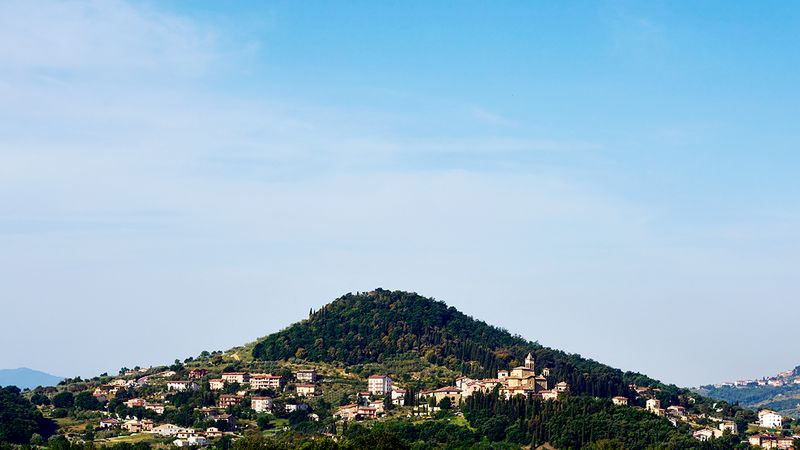THE JOURNAL
The caramel hue of the stone. That’s the first thing you notice as you climb the cobbled hill to the 14th-century castle that is now the heart and home of Brunello Cucinelli. In Italian masonry it’s referred to as filaretto, a local rock that, when drenched in sunlight, encases the town of Solomeo and its inhabitants with a distinctive warmth and glow.
It wasn’t always this way. The luxury clothing and accessories brand began life, in 1978, as a small cashmere sweater business. And while it still makes those – to great aplomb – it has grown into a company that, in 2024, recorded revenues of €1.3bn, with a global workforce of more than 3,000 people.
Likewise, Solomeo, previously left in ruins, has blossomed in tandem. The hamlet is now largely owned by Brunello Cucinelli himself, acquired through gradual investments. The theatre he designed and built almost two decades ago alongside his wife, Federica (who was born here). The streets he resurfaced and restored, the charming gardens he commissioned or rebuilt.

“I wanted not to alter its nature,” Brunello told us when we first visited, a decade ago. “I just wanted to make this hamlet productive again. Once upon a time wheat, olive oil and corn were produced here, today we produce cashmere, so I don’t think I have dramatically changed its nature. I wanted to preserve it, safeguard it, embellish it.”
It’s this careful approach and sensitivity that has earned Cucinelli the reputation as the “king of cashmere”. His rise, from Umbrian farm boy and university drop-out to beneficent preserver, societal guardian and purveyor of luxury, has been built rather than bought, a key factor in his national popularity. Over a period of 50 years, he has slowly transformed Solomeo from weary and dilapidated to industrious, polished and picturesque.
“I come from a family of farmers,” Cucinelli told us. “A poor family, I have witnessed hardship. I saw how hard work can be and how humiliating, I do not want to do the same. We respect human dignity. To make special garments we need special human beings. In order to be special, human beings need to be treated with moral and economic dignity. These are the foundations of my work.”
The improvements to Solomeo itself continue. However, Cucinelli isn’t just building a business here. He is designing a way of life – and, perhaps more importantly, a return to true craftsmanship. “I wanted to make something that you could pass onto your children to keep and enjoy,” Cucinelli has said of his clothing, but the same could be said of this place.
“The Italian philosopher Adriano, a lover of beauty, best explains my approach. I feel responsible for the beauty in the world. If you build something that does not look good, then you have made mankind uglier.”